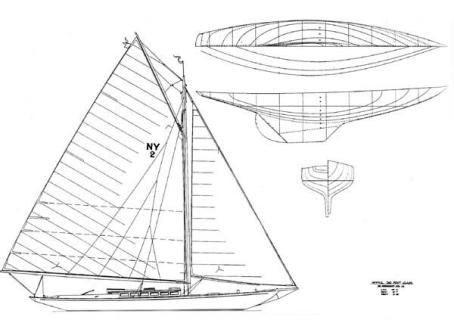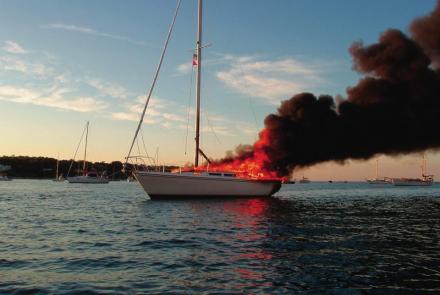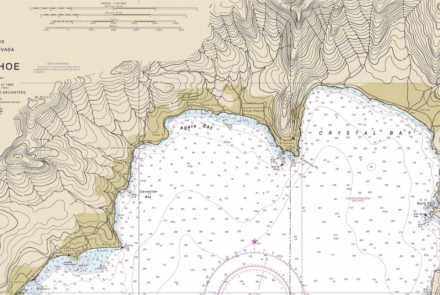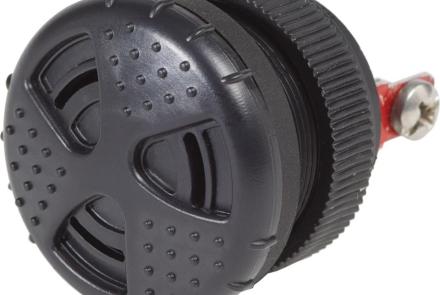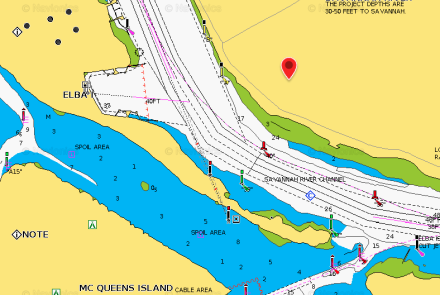The Cruising Club and its Designing Members
The Cruising Club of America has always been explicitly amateur. The test of one’s suitability for election is a robust blue-water resume with voyaging accomplishments for one’s pleasure and not for remuneration. The boundaries of professionalism have been debated for decades in the Club’s membership committees but one professional category has remained untouched, that of yacht designers. Since its founding in 1922 The Cruising Club has welcomed the talented designers of yachts. Three were Charter Members and a fourth was a Charter Honorary Member. It has never been described exactly as to why yacht designers have not been considered professionals but maybe the reasons are several fold. The CCA is dedicated to the development of boats that can expand our cruising and racing horizons. Design elements evolve over time as experience at sea teaches us lessons, sometimes hard ones. Designers are tasked with improving safety, adapting to new materials and building techniques, searching for greater speed and efficiency and improving sail and motor propulsion. Most importantly, of course, yacht designers create the things we love.
In over a century, more than forty yacht designers have been Cruising Club members. The list does not include every great designer because it is entirely North American and there are several notable names absent but it is a most impressive list of some of the finest minds in yacht design spanning 10 decades. It appears below.
Cruising Club of America Yacht Designers
| Alan Andrews | 2003 |
| James Antrim | 2005 |
| John Alden | 1922 |
| Bill Atkin | 1922 |
| Paul Bieker | 2014 |
| William Cook | 1982 |
| Clinton Crane | 1933 |
| Kenneth S.M. Davidson | 1940 |
| Charles G. Davis | 1922 |
| Arthur deFever | 1968 |
| Mark Ellis | 2007 |
| German Frers, Sr. | 1975 |
| L.E. “Ted” Geary | 1922 |
| William Hand | 1922 |
| Robert Henry | 1954 |
| Halsey Herreshoff | 1973 |
| Nathaniel Herreshoff | 1928 |
| Ron Holland | 2017 |
| Frederick E. Hood | 1972 |
| Waldo Howland | 1933 |
| C. Sherman Hoyt | 1923 |
| Francis Kinney | 1953 |
| Bruce Kirby | 2000 |
| Bill Langan | 1983 |
| C. William Lapworth | 1968 |
| Bill Lee | 2019 |
| Frank MacLear | 1963 |
| Ian McCurdy | 1988 |
| James McCurdy | 1954 |
| Charles D. Mower | 1922 |
| Wirth Munroe | 1926 |
| Frank Paine | 1932 |
| Philip H. Rhodes | 1938 |
| Philip (Bodie) Rhodes | 1968 |
| Linton Rigg | 1922 |
| Diana Russell | 1994 |
| Henry Scheel | 1948 |
| Bill Shaw | 1981 |
| Olin Stephens II | 1929 |
| Roderick Stephens. Jr. | 1932 |
| William P. Stephens | 1922 |
| Garth Wilcox | 2010 |
| Gilbert Wyland | 1956 |
This issue of the CCA GAM will be the first of two devoted to these important members. It will highlight several but not all the names and will begin with those whose contributions were made in the first half of the Club’s history when the CCA Rule for ocean racing rating predominated. The second installment next fall will focus on later designers whose work addressed the International Offshore Rule and developments beyond. There may be controversy with the choices made. Opinions always differ. But it is an attempt to cast light on the important contributions of the design fraternity within the Cruising Club.
Two Charter Members were among the most important yacht designers of the early part of the Cruising Club’s history: William Hand and John Alden. Their work was very different from one another, but both were immensely influential. William H. Hand. Jr’s motorsailers were his best-known efforts and they evolved from his successes in both sail and motor craft having designed both small racing sailboats and V-Bottom racing and cruising powerboats in the early part of his career. Hand’s V-bottom racers established his name along with his schooner designs. Hand contributed the design of the 87’ Arctic exploration schooner Bowdoin in 1921. The revived Bermuda Race of 1923 included five of Hand’s schooners as well as yawls and ketches from his drawing board. His schooners drew some inspiration from the attributes of fishing vessels and tenders and if there was ever an example of “wholesome” in yacht design, Hand’s later motorsailers might lay claim to it. His view was that the perfect combination for propulsion was a primary motor with sail as the auxiliary. Designed for cruising, his later yachts were substantial and sea-going, robust yet beautiful, suitable for sword fishing which he enjoyed and ranging in length from 45’ to 91’. Scantlings were ample. Like John Alden, Hand commissioned numerous yachts for his own use and sold each to move on to a new design. Nineteen Hand motorsailers were built by the Hodgdon Yard in Maine. The largest, Imelda at 91’, carried 3200 gallons of fuel, 2000 gallons of water and boasted of a cruising range of 3,000 miles. He was elected Commodore of the New Bedford Yacht Club in 1929 and died in East Boothbay Harbor in 1946 while overseeing the building of his 650th design.
John G. Alden, like Hand and other great designers of the era, was largely self-taught. In a pattern often repeated in the yacht design field, Alden apprenticed with Starling Burgess and B.B. Crowninshield early in his career before opening his own design office in 1909 in Boston. He is most famous for his schooners which drew inspiration from the Gloucester fishing schooners of the era, refined and made purposeful as both racers and cruisers. At an early age he was commissioned to design the 83’ Serena, a stunning racing schooner launched in 1916. Beginning in 1921 Alden had built to his design the first of ten schooners named Malabar ranging in size from 41’ to 58’. Each year he would race them and move on to a new design and his prowess as a sailor and the success of the designs found a ready supply of buyers. The revived Bermuda Race of 1923, so important in the history of the CCA, marked the first of three victories for John Alden in his Malabar IV and was followed by victories in 1926 in Malabar VII and 1932 in Malabar X. The only other three-time Bermuda Race winner was Carlton Mitchell in Finisterre.
His work was not confined to offshore yachts or schooners. From 1925 to the 1950’s the Alden office produced over 900 designs. He designed successful racing yachts to the Universal Rule R-Class and the Q-Class. His small one designs include the Biddeford Pool One-Design, the Alden O Class, the Triangle Class, the Indian Class/Nantucket One Design and the U.S. One Design. The Malabar Junior, a 30’ coastal cruiser, gained great popularity as did a larger 36’ variant. Many of Alden designs remain active today including When and If, designed for George Patton.
Alden is known for an almost factory like approach to design in his later years, employing in his office many yacht designers who would go on to notable careers. They include Carl Alberg, S.S. Crocker, Howard Chappelle, Charles Schock, Al Mason and K. Aage Nielsen. It seems part of an important aspect of the yacht design fraternity.
It is impossible not to emphasize Olin J. Stephens II in the list of important early CCA Yacht designers. He was elected to membership in the Cruising Club in 1929 at the age of 20, his father having been elected in 1926. Continuing the pattern of Hand and Alden, he had little college education having left MIT after only one semester to pursue yacht design. And like others he spent time with other notable designers in the very early part of his career as a draftsman with Henry J. Gielow and Philip Rhodes. By the time of his election to the Cruising Club he had struck out on his own to design notable six-metres and had crewed in two Newport-Bermuda Races. Still, his career was only beginning. His great breakthrough design Dorade was not yet drawn, and it would be over a year before she left her first mark in the 1930 Bermuda Race with a second in Class A and a trophy for the 1st All-Amateur Crew. This was only prelude to Dorade’s dramatic wins in the 1931 Transatlantic Race and the Fastnet, returning Olin and the yawl home to New York and a ticker tape parade. The long series of yawls born of his first ocean racing design stretched into the early 1950’s and the list of winning yachts includes Stormy Weather, Edlu, Sonny, Blitzen, Gesture, Avanti, Baruna, Bolero, Circe and many others of the type. To complete the portfolio, Stephens drew Six-Metres galore and went head-to-head with the greatest designers of the International Rule in 12’s and 8’s as well. His work included the J-Class Ranger, in collaboration with Starling Burgess. His designs in the 1950’s included the breakthrough centerboard yawl Finisterre as well as the 1958 Twelve-Metre Constellation, the first of eight winners of the America’s Cup from his drafting board.
The technical side of Stephens career was notable. He actively sought scientific help in developing racing designs and engaged Kenneth S.M. Davidson at the Stevens Institute of Technology in tank testing. He was at the forefront of the development and refinement of the Cruising Club Rating Rule and continued actively in the field when new rating rules such as the International Offshore Rule were developed. Sparkman & Stephens designs were prominent in production boats beginning with the New York 32 and continuing with many successful offerings from Swan, Tartan and others. Well into his 90’s Olin lectured on math, design and engineering at Dartmouth College. And like so many other yacht design firms, S&S employed important designers such as German Frers, Aage Nielsen, Francis Kinney and Bill Langan, some remaining and others striking out on their own. Ever courteous but driven, Olin Stephens may arguably be considered, along with N.G. Herreshoff, as the preeminent American yacht designers of the Twentieth Century. Olin died at the age of 100 in 2008.
Nathaniel Green Herreshoff was elected to CCA membership as an Honorary Member in 1928 at the age of eighty. This was surely an acknowledgment of the extraordinary stature of “the Wizard of Bristol” in both yacht design and building. Herreshoff, unlike Hand, Alden and Stephens, had completed his engineering degree at MIT and applied it first to the development and construction of steam boilers and power systems, experience which he would employ in his designs of motor yachts. Inventiveness and, indeed, brilliance characterized his approach to design, structure, weight saving and displacement. It is remarkable that Herreshoff is believed to have developed the first practical sailing catamaran, the 25’Amarylis capable of speeds up to 20 knots. He patented the design in 1877. The Herreshoff Manufacturing Company was founded by brothers Nathaniel and John in 1878. Production started with the raw materials…wood, lead, bronze, steel. Power sources were independently manufactured and advanced engineering predominated. Early efforts concentrated on large steam yachts. In 1891 Gloriana, built to race in the 46-Foot class, launched Herreshoff into the field of large sailing yachts with her dominance over a field populated by proven designers such as Edward Burgess, Frank Paine and William Fife III. Drawn-out ends which extended the waterline when heeled challenged established thinking and the rating rules. Great attention to wetted area, weight-saving and the design of strong yet light steel framing added speed. Gloriana so dominated that she was retired “for the good of the class.”
A series of sailing large yachts followed, many built for the industrial and financial titans of the age. Overhangs were refined and the bolted-on fin keel was introduced. With an America’s Cup in the offing and perennial designer choice Edward Burgess gone in 1891, Herreshoff was chosen to design the defender in 1893 and the result was Vigilant. He was made skipper and the defense was successful. This led to the design and building of dominant Cup defenders for the next 26 years with Defender (1895), Columbia (1899 and 1901), Reliance (1903), and Resolute, (1920).
Many yachts followed and spanned the ranges from power to sail, from large to small. His one- designs include the Newport 30, the NY 30, 40, 50, 65 and 70. Herreshoff loved to sail small yachts and he contributed the still popular Herreshoff 12 ½, Buzzards Bay 15 and 25, and the Fish class and his Alerion is still being built.
With the death of John Herreshoff in 1915 the Company began to change and Herreshoff family ownership ended in 1924. Building to both NGH’s designs as well as to the designs of others commenced, and the Herreshoff Manufacturing Company continued through WWII until it was finally liquidated. It can be said, however, that there was no equal to Nathaniel Herreshoff in the combined design and building of yachts in America or the world.
There are so many other CCA yacht designers of note and it is difficult not to mention them all. Surely Philip Rhodes stands tall with his great racers such as the Carinas for the Nye’s, Escapade, the America’s Cup Defender Weatherly, Maruffa and production designs such as the O’Day Tempest and the Rhodes Reliant. Clinton Crane, a generous supporter of younger designers who contributed foundational design developments within the Six-Metre class, produced designs for Twelve-Metres, the J-Boat Weetamoe and the 262’ steam yacht Noma. Charter Member Charles Davis was a major factor in designs for home boatbuilders published in Rudder. Honorary Charter Member W.P. Stephens designed and popularized sailing canoes early in his career. Ted Geary’s designs of beautiful powerboats and great racers in the R-Class made him a Pacific Northwest legend. Francis Kinney emerged from the shadow of S&S to design the beautiful and famous yachts Pipedream and Santa Maria. Importantly, he revised and expanded “Skene’s Elements of Yacht Design” to the benefit of all with an interest in the field.
This look back at great yacht designing CCA members is the first of two such forays into our history. A second installment featuring later designers and their work will follow in the Gam this coming fall.
Douglas Adkins
Historian
Note: My fond thanks to Mark Ellis and Sheila McCurdy for their generous assistance with this article.


